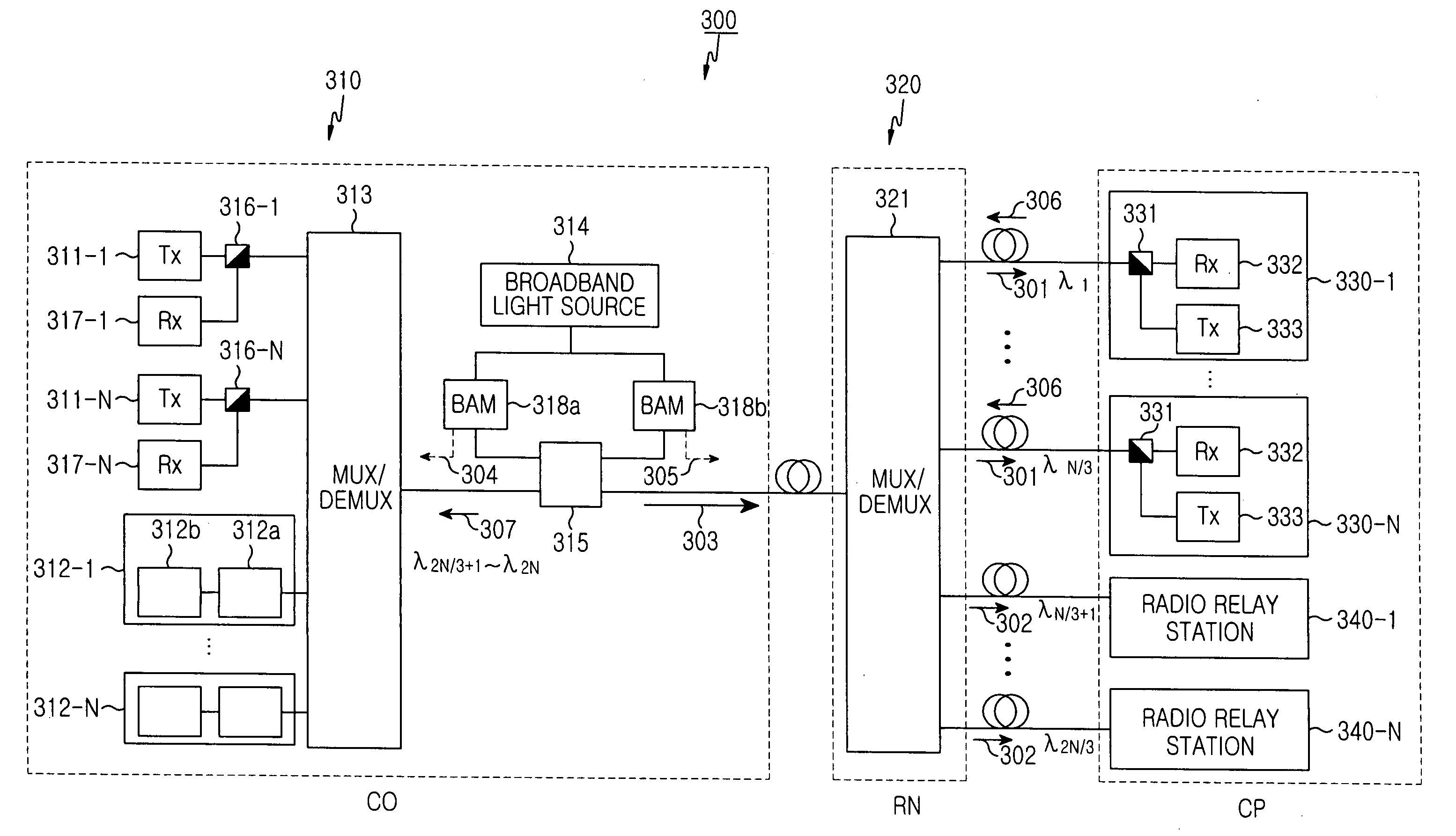Optical access network of wavelength division method and passive optical network using the same
a technology of wavelength division and optical access network, applied in wavelength division multiplex system, electromagnetic transmission, multi-component communication, etc., can solve the problems of network requires large initial investment cost, and may incur serious loss while limiting bandwidth, so as to minimize the initial investment cost of wdm optical access network
- Summary
- Abstract
- Description
- Claims
- Application Information
AI Technical Summary
Benefits of technology
Problems solved by technology
Method used
Image
Examples
first embodiment
[0035]FIG. 3 illustrates an optical access network 200 according to the present invention. The wavelength division multiplexed (WDM) optical access network 200 includes a central office (CO) 210 for multiplexing first optical signals 203 for wire communication and second optical signals 204 for wireless communication, a remote node (RN) 220 for demultiplexing a multiplexed optical signal 202 received from the CO 210, and a customer premise (CP) 230 for receiving the first optical signals 203 and the second optical signals 204 demultiplexed in the RN 220. The CP 230 includes a plurality of subscribers 231-1 to 213-N, each of which is connected to the RN 220, and a plurality of radio relay stations, each of which is connected to the RN 220.
[0036] The CO 210 includes a broadband light source 214 for generating light with broadband wavelengths, a multiplexer 213, a plurality of light sources 211-1 to 211-N for generating first optical signals 203 wavelength-locked by corresponding incoh...
second embodiment
[0046]FIG. 6 illustrates an optical access network 300 according to the present invention. The passive optical access network 300 for bi-directional communication includes a central office (CO) 310 for multiplexing first optical signals 301 for wire communication and second optical signals 302 for wireless communication, a remote node (RN) 320 connected to the CO 310 through an optical fiber and for demultiplexing a multiplexed downstream optical signal 303 received from the CO 310, a plurality of subscribers 330-1 to 330-N connected to the RN 320, and a plurality of radio relay stations 340-1 to 340-N connected to the RN 320. Each of the subscribers 330-1 to 330-N receives the first optical signal 301 with a corresponding wavelength from among the demultiplexed first optical signals and outputs a wavelength-locked upstream optical signal 306 to the CO 310 through the RN 320. Each of the radio relay stations 340-1 to 340-N converts the second optical signal 302 with a corresponding ...
PUM
 Login to View More
Login to View More Abstract
Description
Claims
Application Information
 Login to View More
Login to View More - R&D
- Intellectual Property
- Life Sciences
- Materials
- Tech Scout
- Unparalleled Data Quality
- Higher Quality Content
- 60% Fewer Hallucinations
Browse by: Latest US Patents, China's latest patents, Technical Efficacy Thesaurus, Application Domain, Technology Topic, Popular Technical Reports.
© 2025 PatSnap. All rights reserved.Legal|Privacy policy|Modern Slavery Act Transparency Statement|Sitemap|About US| Contact US: help@patsnap.com



